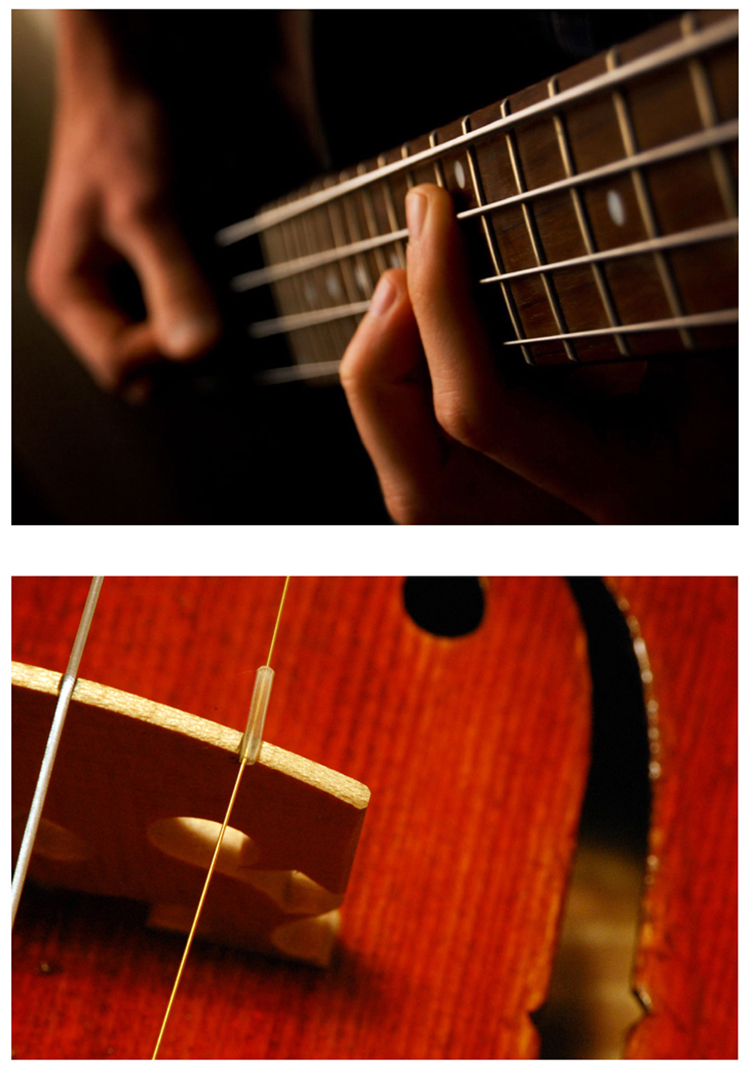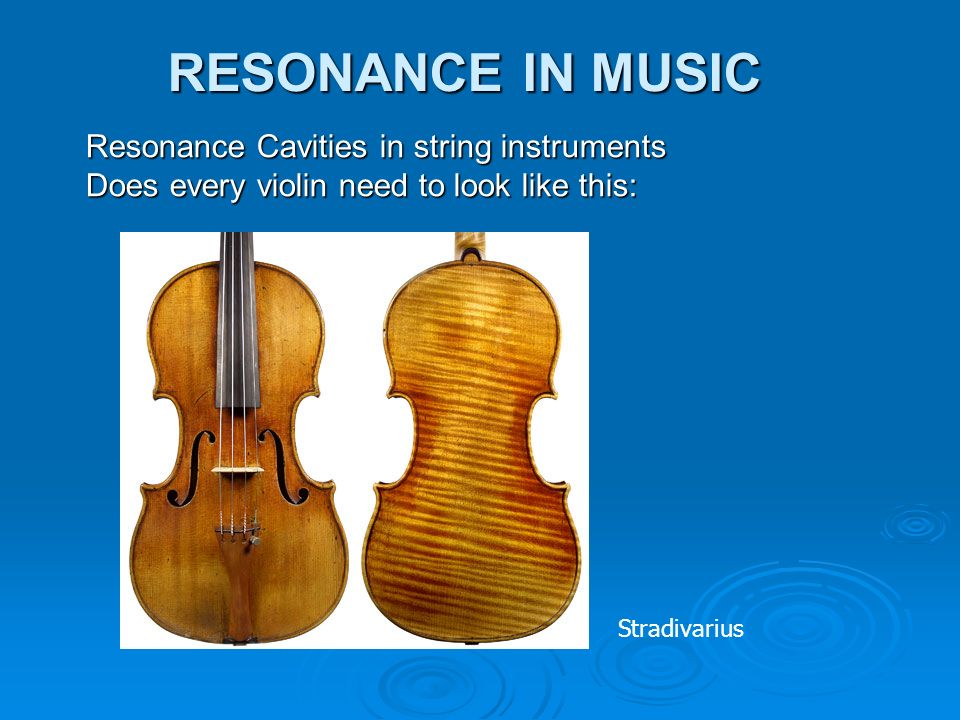

The natural frequencies of a musical instrument are called the harmonics of the instrument. Musical instruments create sounds at their natural vibrational frequencies, which depend upon their size and structure. We performed comparisons of the instruments that revealed each instrument’s unique characteristics. We also analyzed high-speed videos of the strings to better observe the oscillations produced. We studied body vibrations by looking at the sand patterns that form when the instrument is excited at different frequencies. In this research, we gathered string oscillation data, vibrating the strings at different locations with different methods of excitement. These elements interact to create the sound we hear in each instrument.

Stringed instruments create the sound in three phases: (i) the source or string, (ii) the medium or body and (iii) the interface, which is the oscillation of the air around the body. We strived to understand how different stringed instruments function individually, and how instruments differ in their sound and function. This creates acoustic pressure waves which reaches the earpiece of the stethoscope.Our objectives for this project include an in depth analysis of the properties of stringed instruments. Vibrations from the heartbeats, vibrate the diaphragm of the stethoscope. The chest piece contains two sides that can be placedĪgainst the patient. Acoustic stethoscope operates on the transmission of sound from chest to listener’s ear via a hollow tube. Vibrations of the prong of the tuning fork are perpendicular to the direction of propagation of the wave, then N = n. The vibration of the prong of the tuning fork is parallel to the direction of propagation of the wave then in Melde’s experiment frequency of tuning fork (N) is double the frequency of vibration of string (n). Melde’s experiment also demonstrates the formation of stationary waves in the form of loops. Y = A s i n ω t Y \right) N = 1 / 2 L x √ ( T / m ) where N is the frequency of a fork and m is the linear density of the string.

A stationary wave is one where the frequency is the same as the progressive waves, but amplitude changes with the position of the particle.

A standing wave is the resultant wave formed when two waves either both transverse and longitudinal, traveling in opposite directions interfere and superimpose.


 0 kommentar(er)
0 kommentar(er)
